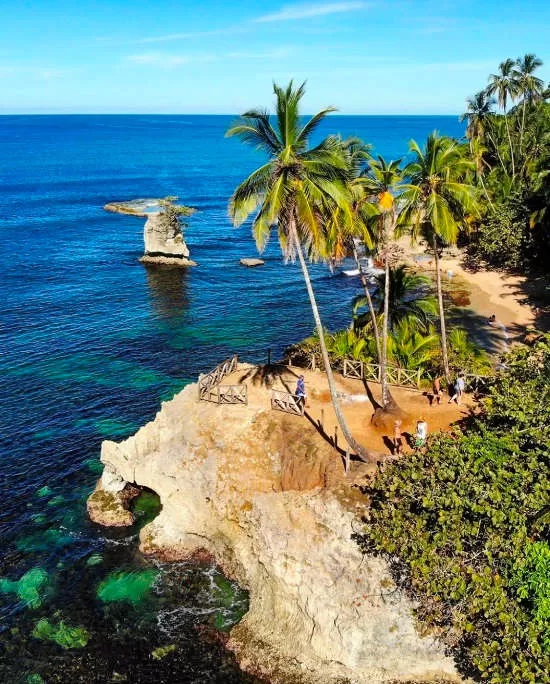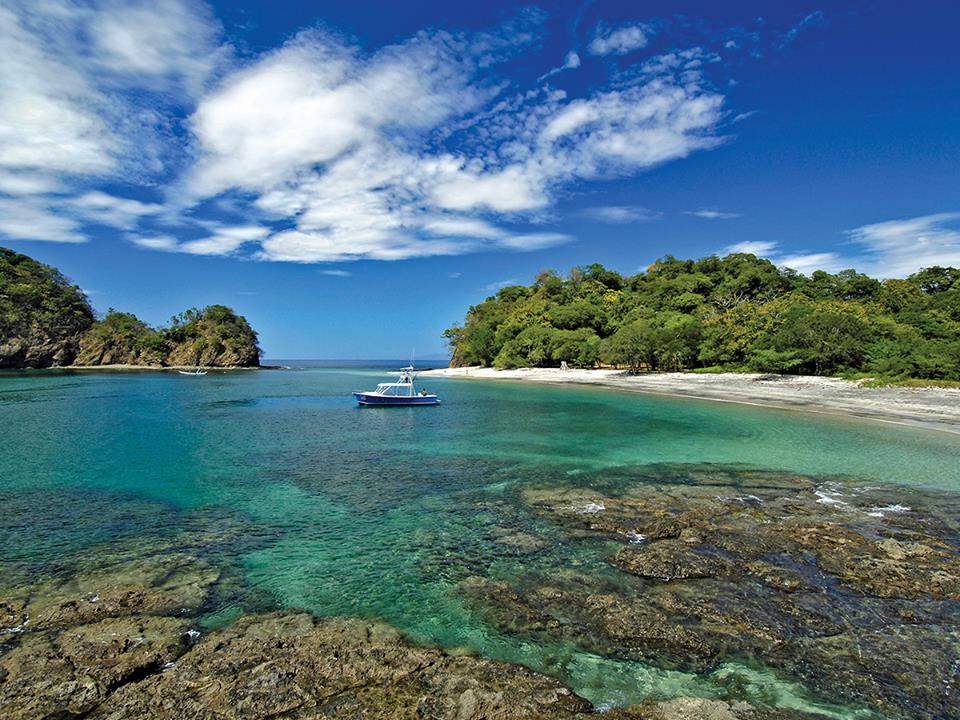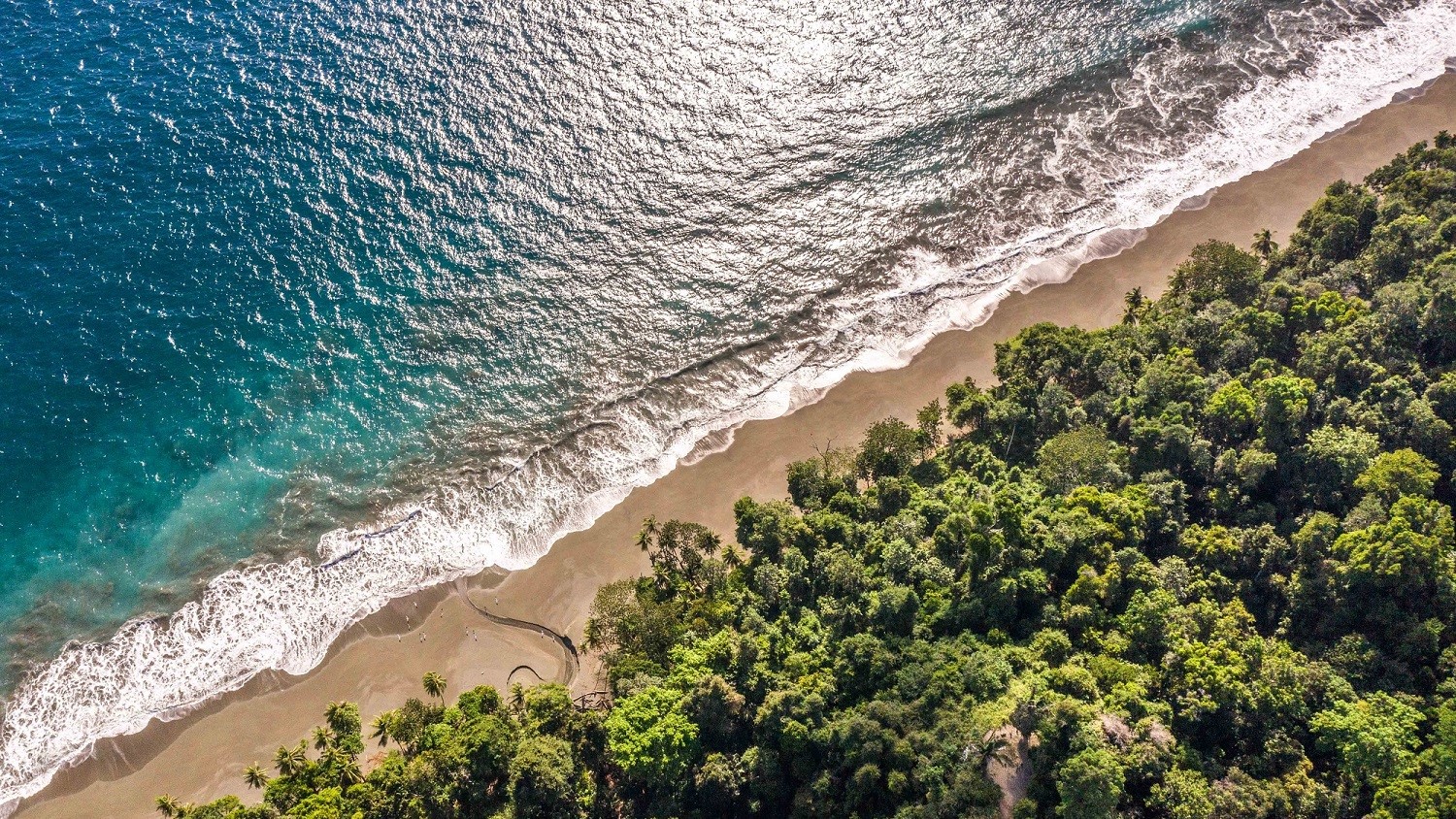Turquoise water, rocky white sand beaches backed by coconut trees, and lush rainforest are characteristic of Costa Rica’s southern Caribbean coast. Gandoca Manzanillo Wildlife Refuge protects roughly 70% of the southern Caribbean, which stretches from the little village of Manzanillo down to Panama. The wildlife refuge has wild white sand beaches, picturesque little coves, rocky outcrops, and rainforest teeming with wildlife.
Wildlife

On land, monkeys, coat, sloths, iguanas, poison dart frogs, and more can be found in the Gandoca Manzanillo Wildlife Refuge. Over 350 bird species can be seen within the park: the red-capped manikin, the red-lored parrot, and the chestnut-mandibled toucan to name a few.
Offshore, the coral reef attracts marine life to the park. The waters here are some of the clearest in the country when the water is calm (August through October) – ideal for snorkeling! Three different dolphin species (including an endemic freshwater species), four different sea turtle species (from March to July), manatees, crocodiles, lobsters, and long-spine sea urchins have been seen offshore.
Gandoca-Manzanillo Highlights

One of the highlights and best photo opportunities is Mirador Gandoca Manzanillo, the viewpoint overlooking the picturesque Manzanillo Beach. From the lookout, you can take the staircase down to the beach for a swim.
Within the wildlife refuge, Punta Mona (monkey point) is a refuge for waterfowl. South of Punta Mona is a natural oyster bank and the only red mangrove on Costa Rica’s Caribbean coast.
Further south, Playa Gandoca is a brown-sand beach backed by wetlands where sea turtles return annually to nest.
Gandoca-Manzanillo Hiking
A coastal trail beginning in the town of Manzanillo stretches 3.4 miles to Punta Mona. The first section of the trail out to Tom Bay (a roughly 40-minute walk) is the most frequently traversed and clearly marked. If you decide to head out beyond that, it is recommended that you take a guide.
To reach the main hiking trail within the park, walk along the beach south of Manzanillo. You may have to cross a small river at certain times of the year. On the other side of the little river, the trailhead picks up!
Guided Hike of Gandoca-Manzanillo Wildlife Refuge:
We highly recommend exploring the Gandoca-Manzanillo Wildlife Refuge with a professional naturalist guide. You will see much more wildlife and discover the unique attributes of the ecosystem within the park! Additionally, this is a less frequently visited area of the country. A guide will help you make the most of your time and bring you to the best places! Talk to a Costa Rica Expert to arrange the details of your adventure as well as any additional transportation or accommodation needs.
The Gandoca-Manzanillo Refuge Jungle Hike

A great way to see the amazing and lush Caribbean rainforests of Costa Rica. You will see trees covered with lichen, bromeliads, orchids, and mosses, creating abundant life and beauty. There are approximately 384 species of birds that exist in the forest, and your nature guide will point out different species like hummingbirds, tanagers, owls, and toucans. You may also see different types of wildlife like white-faced monkeys, howler monkeys, sloths, iguanas, snakes, poisonous frogs, and many other types of animals. You will learn about the many types of medicinal plants that are native to Costa Rica, learn about the natural history, and understand Afro-Caribbean customs. On your way back, you can stop and enjoy a delicious Caribbean meal at the popular restaurant Maxi’s at your own cost before we head to the beach! All of our guides speak both English and Spanish, but you may wish to request one of our French and German-speaking guides.
Gandoca Manzanillo Wildlife Refuge FAQs:
What hotels are near Gandoca Manzanillo Wildlife Refuge?
Is there an entrance fee for the Gandoca Manzanillo Wildlife Refuge?
Entrance is free!
What are the hours of the Gandoca Mazanillo Wildlife Refuge?
8 am – 4 pm
What is the weather typically like?
The southern Caribbean coast is one of the few areas of the country in which the weather contrasts with the rest of Costa Rica. September and October are the driest months in the Caribbean.
For more information, check out our favorite national parks in Costa Rica or browse our vacation packages to get started planning your trip!





